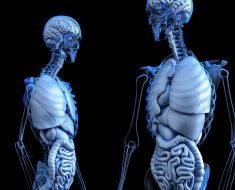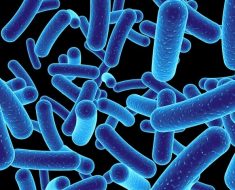Diabetic nephropathy is the damage caused to the kidneys by diabetes mellitus. Around 50% of individuals with type 1 diabetes will develop nephropathy within 10 years of having the disease and around 20% of those with type 2 disease will develop it within 20 years.
The persistently high blood sugar that occurs in diabetes can eventually cause damage to various organs including the kidneys, eyes and heart.
Diabetic nephropathy usually has a silent onset, meaning it may not be detected until much of the kidney is damaged.
Symptoms
Some of the features of diabetic nephropathy include:
- Raised level of the protein albumin in the urine. Damaged kidneys may let large molecules such as albumin pass though into the urine, causing urine levels of albumin to rise.
- Raised blood levels of creatinine. Creatinine is normally filtered out from the body by the kidneys but if the kidneys are damaged, the blood levels of creatinine may be raised.
- There may be other organ damage caused by diabetes such as heart disease or diabetic retinopathy (eye damage).
Outcome
Without treatment, diabetic nephropathy may eventually leads to end stage renal disease.
In the initial stages of disease, diabetic nephropathy does not cause pathological damage to the kidneys and is reversible. If the condition progresses, the kidneys will start to become damaged and the gromerular filtration rate will decrease.
The extent of kidney damage can range from mild and symptomless, as in stage 2 disease, through to end stage renal disease which is characterized by a significantly lowered filtration rate causing a build up of waste products in the blood.
Individuals with disease that is this advanced eventually require dialysis or a kidney transplant to stay alive. These individuals may also have complications of kidney disease such as high blood pressure, heart disease, bone disease and anemia.
Treatment
In the early stages of diabetic nephropathy, when the urine levels of albumin are raised, blood pressure medications such as ACE inhibitors may be used as they can reduce the protein leakage. In more advanced stages, treatment includes control of blood sugar and blood pressure as well as the correction of other factors that raise the risk of heart disease such as high blood cholesterol.
Sources
- http://www.nice.org.uk/nicemedia/pdf/diabetesrenalfullreport.pdf
- www.uthsc.edu/endocrinology/documents/Green_DiabeticNephropathy.pdf
- http://care.diabetesjournals.org/content/28/1/164.full.pdf
- http://bib.irb.hr/datoteka/610903.InTech-Diabetic_nephropathy.pdf
- http://www.emrn.org.uk/documents/Diabetic%20Nephropathy.pdf
Further Reading
- All Diabetic Nephropathy Content
- Diabetic Nephropathy Treatment
- Diabetic Nephropathy Symptoms
- What causes Diabetic Nephropathy (Kidney Disease)?
Last Updated: Feb 26, 2019

Written by
Dr. Ananya Mandal
Dr. Ananya Mandal is a doctor by profession, lecturer by vocation and a medical writer by passion. She specialized in Clinical Pharmacology after her bachelor's (MBBS). For her, health communication is not just writing complicated reviews for professionals but making medical knowledge understandable and available to the general public as well.
Source: Read Full Article





